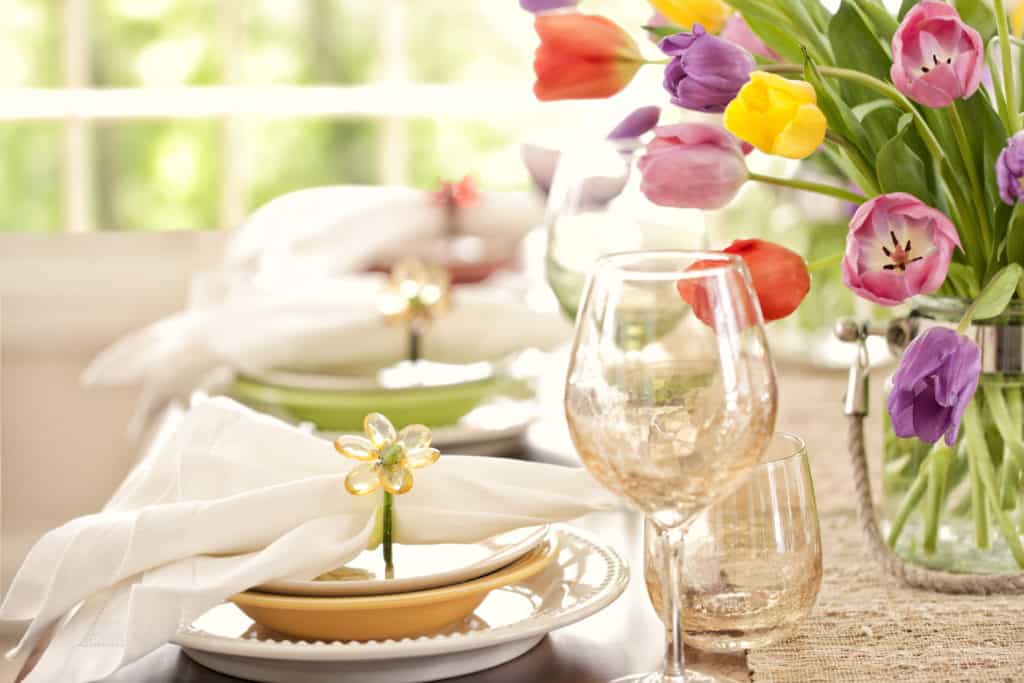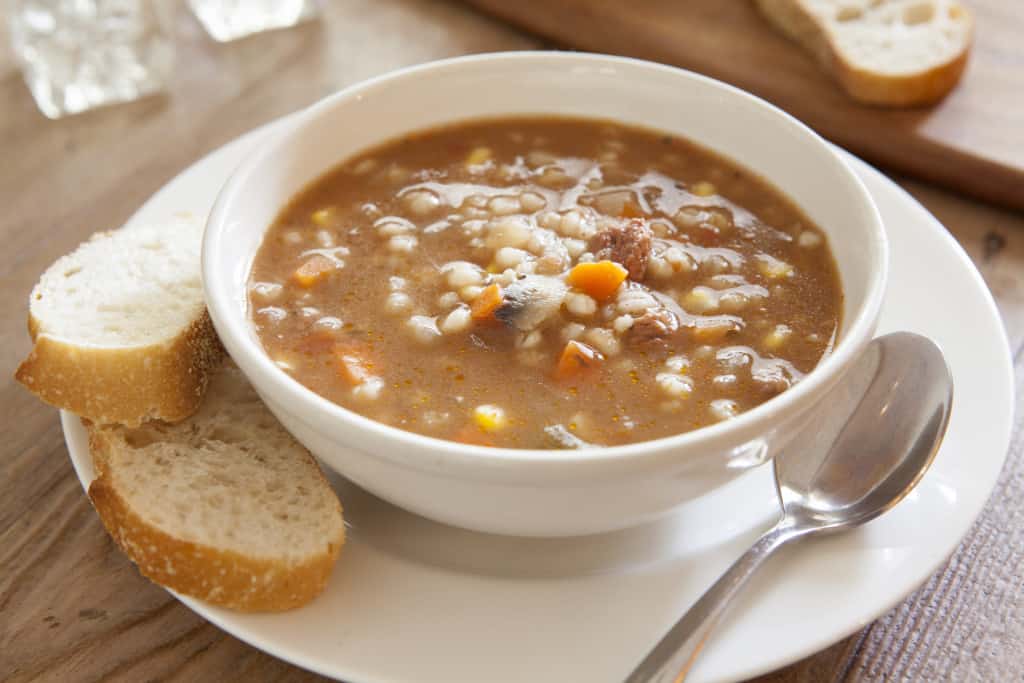Here are 7 everyday dining manners you’re probably breaking without knowing it. Based on my years of teaching classes and corporate seminars, these are the dining skills that people are surprised to find exist but happy to add to their skill set because of the positive impact they have on their level of confidence and graciousness in every dining situation!
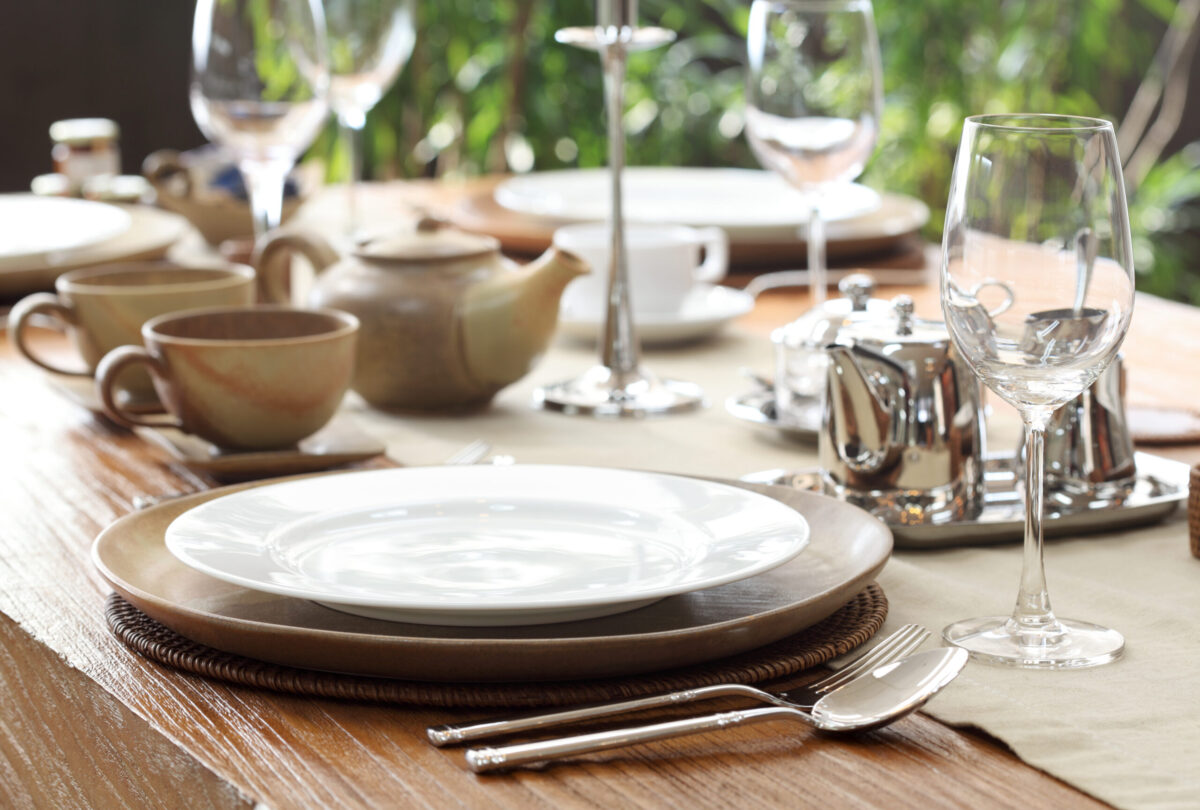
By: Maralee McKee, Manners Mentor
Whether someone’s table manners are excellent or have room for improvement, and even if we’re trying hard not to pay attention, it’s almost impossible not to notice the dining manners of those around us.
That’s for good reason. At the average table, we’re sitting just 18 inches from the person next to us, and every time we share a meal with others, for better or for worse, we’re also sharing our table manners and dining etiquette with them.
The following 7 everyday dining manners won’t solve any world problems, obviously. What they will do is make you confident that you’re representing yourself with graciousness and smart confidence. This confidence frees you from wondering or worrying about the impression you’re making so that you can concentrate on what’s important — drawing others at the table to you, knowing that you’re authentically being the best version of yourself.
I sometimes come across people when I’m teaching classes or corporate seminars who think that dining etiquette was invented to separate rich from poor. And hundreds of years ago, that was true. Nobility wanted to set themselves apart in every aspect, including the way they ate.
However, what was once meant to separate us from one another now joins us together! By knowing these rules, you can confidently go anywhere and dine with anyone.
As you read the dining skills below, you’ll see that none of them are only for show.
They all serve a purpose that helps us avoid dining mishaps that will distract from our feelings of being at ease (food landing on our clothes or seeping through an unfolded napkin in our lap, etc.).
In addition, they equip us to make things easier for our tablemates by helping them avoid mishaps that might make them feel embarrassed or distracted from the real reason we gathered around the table in the first place: to enjoy each other’s company or to talk over important work or personal issues.
The 7 dining manners you’ll find below are the ones that, in my many years of teaching, my students have said they never knew. Maybe you’ll find that you’re as surprised as they were to discover these 7 everyday dining manners you’re probably breaking without knowing it!
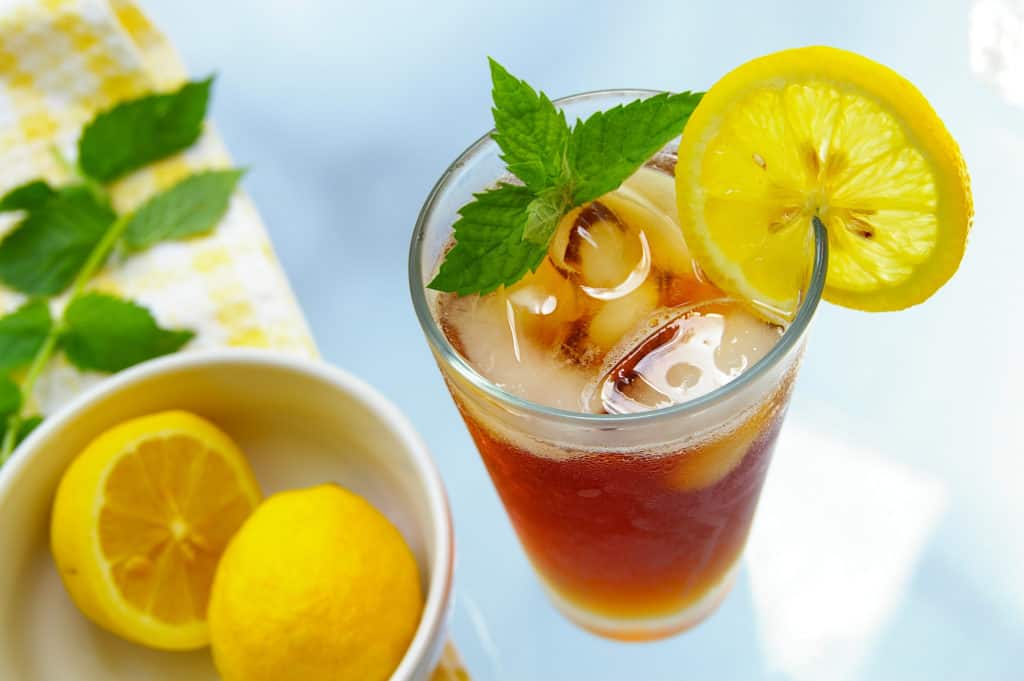
The lemon and mint should be placed in the glass, on the napkin that’s under the glass, or on the side of a plate if you prefer not to add it to your beverage.
7 Everyday Dining Manners You’re Probably Breaking Without Knowing It
1) Lemons or any other garnish do not remain on the rim of the glass when you’re drinking from it.
Whether it’s a lime, a lemon, or a little paper umbrella, when it comes time to drink your beverage, either place the item in your glass or on the napkin or plate that’s under your glass. If there isn’t anything under your glass, then place the item on the edge of your bread plate or dinner plate.
Why? Anything propped on a glass is liable to fall off and plop in your lap, on the table, on the floor, or perhaps even poke you in the eye. It’s better to be proactive and simply place the decoration off to the side in advance of enjoying your beverage. The same applies to anything such as fruit served on a pick of any kind or even a brightly covered tiny paper umbrella. Remove it from the glass before taking your first sip. If you would like, it’s fine to eat the fruit from the pick.
For much more about beverages at the table, subscribe to receive blog posts in your inbox and receive my free Savvy Dining Skills Guide because you deserve to be the most confident and in-the-know diner at any table. (You’ll find a subscription box near the bottom of this page.)
2) You’re probably sitting too far away from the table.
People are always surprised to learn how very close to the table they’re supposed to sit. Even more surprising is that we each have our own unique, perfect distance and our own perfect measurer. Best of all, the measurer is built in, and it’s only as far away as your hand!
It’s called the “Table Checker,” and it’s done in four swift motions!
While sitting at the dining table:
- Place your four fingers together.
- Tuck your thumb in under your four fingers.
- Place your little finger flush against the table.
- Push your chair in until your stomach is touching your index finger as shown in the photos below. Easy peasy and oh so savvy!
Why? When we sit close, it causes us to sit up straight, making meals served at the table more of an occasion and less of the casual affair of meals served away from the table. Also, if something falls on our lap, it’s bound to hit our napkin and not the extra space on our lap that our napkin doesn’t cover.
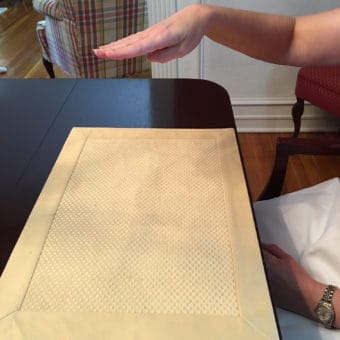
Steps One and Two of Four: Place your four fingers together and tuck your thumb under your fingers. I’ve done this in mid-air for illustrative purposes; you, of course, will want to do this nonchalantly with your hand on or near your lap. 🙂
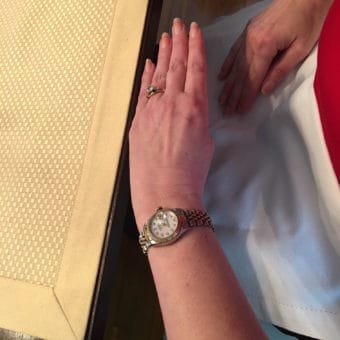
Step Three of Four: Place the little finger of your hand against the table. It doesn’t matter whether you use your left or right hand … you’re almost done!
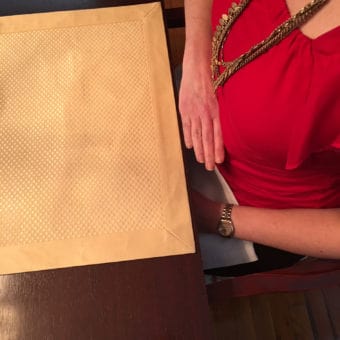
Step Four of Four: Push your chair in until your index finger is touching your waist/belly. Yes, that means that the size of our waistline is going to determine how close we’ll be able to sit to the table. However, by following this method, each person is as close to the table as possible. After a time or two of using your personal “Table Checker,” you’ll naturally know how far to sit from the table, and you’ll no longer need to measure. On a side note, this obviously doesn’t work when sitting in a restaurant booth. To compensate, sit as close to the edge of the bench as necessary instead of leaning back in the booth.
3) Never the pass the salt, no matter how nicely someone asks!
When tablemates ask you to please pass the salt or the pepper, you don’t. You pass them both the salt and the pepper even though they only requested one. Plus, you don’t actually pass them in the traditional sense of handing them to the person beside you who will then hand them to the next person and so on.
Why? Salt and pepper are kept together on the table (Consider them newlyweds who can’t bear to be apart for even a few minutes!) because when the next person asks for one or the other, or both, they are much easier to keep track of when they’re together. Plus, most people do want to use both, so by keeping them together, you’re keeping them ready for the next person.
Salt and pepper shakers don’t tend to be large, so if they’re handed off (passed) from person to person, someone’s hand is going to end up touching the top portion where the salt and pepper are poured from, and also because they’re small, they’re easy to drop. For these reasons, the person nearest the salt and pepper picks up both of them at the bottom and places them down on the table near the person they are seated next to. That person then picks them up and sets them down by the next person. This process continues until the shakers arrive near the person who requested them! This might sound like “a lot.” Yet once you do it, you’ll see there’s really nothing to it!
4) When placed on your lap, a dinner napkin is never fully opened. It’s left folded in half with the fold facing your waist.
Most people think that a dinner napkin is opened fully on your lap to protect as much of your clothing as possible. However, a dinner napkin is never opened fully. It’s left folded in half with the fold facing your waist.
Why? There are two reasons. The first is that a dinner napkin is normally 18 to 20 inches wide. Sometimes, it’s as large as 24 inches. When folded in half, it gives anywhere between 9 and 12 inches to cover your lap. The etiquette of this actually ties into point 2) above. When you’re sitting as close to the table as you need to, you don’t have to worry about dropped food not landing on your napkin. The 9 to 12 inches of coverage you have on your lap is plenty!
The second reason is that when your napkin is folded in half on your lap, the top half is used to wipe your fingers and lips, and the bottom half is kept on your lap and not used, creating a barrier between whatever is on the top half of the napkin and your clothes! Pretty nifty!
5) If grace is going to be said, food isn’t passed and nothing on the table is touched until after the prayer.
When dining with others, always pay attention to the host and/or hostess, especially if you aren’t familiar with their dining traditions. In a home, if grace is going to be said, nothing on the table is touched until after grace is said.
Why? In this way, gratitude is made the priority. For more about the etiquette of saying grace and what to say if you’re asked to say grace, check out my post on How to Say Grace Amazingly Well.
6) Spoon soup away from you.
Although it sounds counterintuitive, soup is correctly spooned away from you instead of towards you in a soup cup, plate, or bowl. And soup is eaten from the side of the spoon instead of the tip.
Why? Spooning soup away from you helps allow any extra soup on the spoon to fall off and into the bowl on its quick journey across the top of the bowl on the way to your mouth, instead of falling onto your lap. For more about the etiquette of eating soup, including a video I made and two delicious and easy-to-make soup recipes, check out this post!
7) Elbows are allowed on the table … sometimes.
Etiquette evolves to meet the sensibilities of the generation it’s currently serving, and allowing elbows on the table in our casual culture is something I thought had happened within the past ten or fifteen years. I was wrong. In researching a different topic yesterday, I reached for one of my older etiquette books (I collect them). That book from 1968 explained that it was now proper to place your elbows on the table as long as there was no plate at your place setting, such as before or after the meal or in between courses. Who knew?! This “new” rule has been new for about half a century!
Why? Placing your elbows on the table helps you lean into the conversation. It signals with your body that those who are talking have your full attention and that you’re interested in what they’re saying. For a perfect example, take a look at the title photo for this post! Notice how engaged the woman and man look who have their elbows on the table.
Grace Note: Keeping in mind that most people aren’t aware of the “new” changes in this rule, there is a little more to this one. You can find out all about it, and how to know whether you should or shouldn’t have your elbows on the table in a particular situation, in this post: Elbows On the Table, Have the Manners Changed? Yes!
What’s Next?
Thank you so much for reading this post! You could be anywhere right now, and I’m deeply grateful to you for spending a few minutes of your time with me! If I can be of any service, drop me a line at [email protected]. If you enjoyed this post about everyday dining manners you’re probably breaking without knowing it, please consider Pinning it to Pinterest or Sharing it on Facebook. By doing so, you’ll be part of the Manners Mentor Movement, spreading the word that manners are alive and as important today as in any generation, perhaps even more!
Blessings and hugs,
